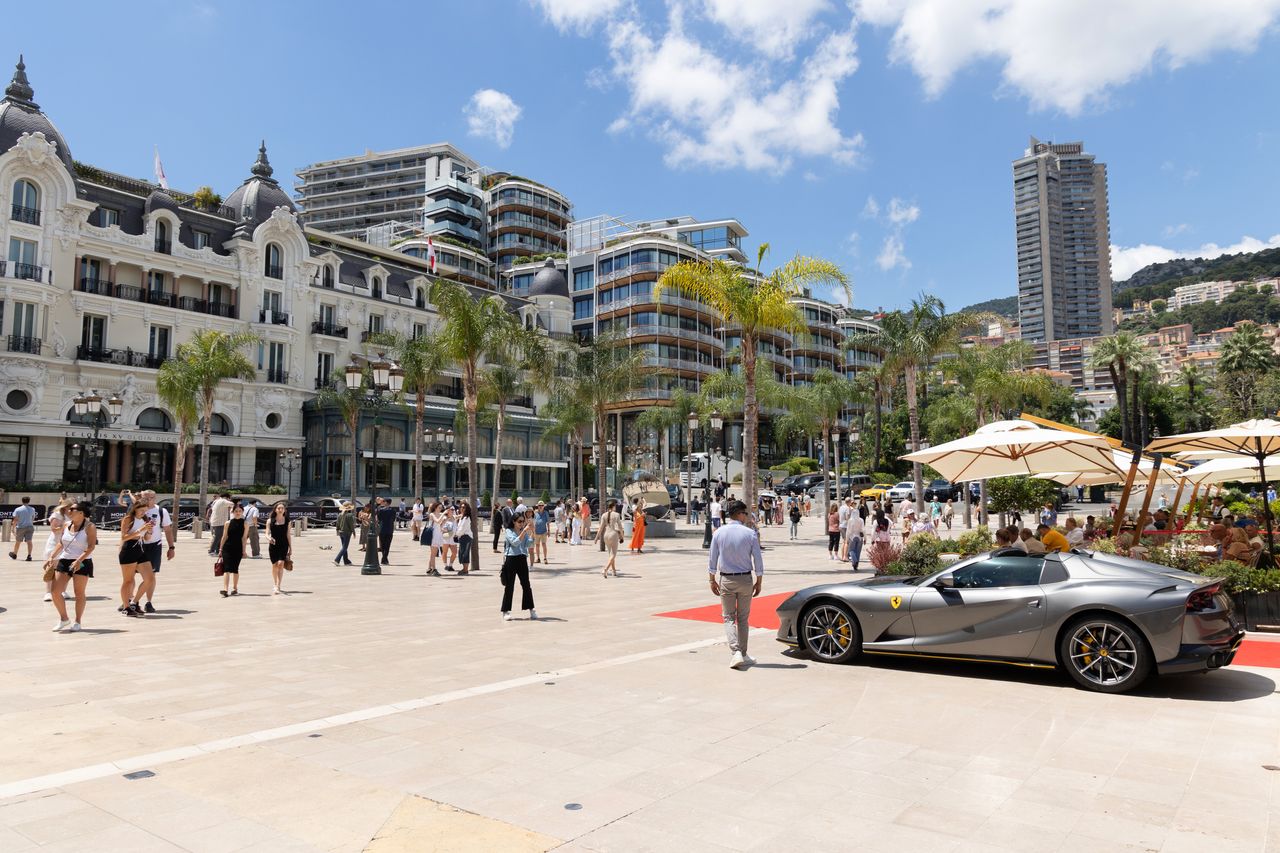The wealth creation guide, no matter what your age
There’s more to building substantial savings than putting away what you can after paying your bills
Whether you’re starting your wealth creation journey in your 20s, 30s, 40s, 50s or beyond, the core principles remain consistent. Create more income, manage your savings, and invest intelligently.
We look at the best wealth creation strategies depending on which decade you’re in right now.
In your 20s
The key to wealth creation is to start early. So if you’re reading this and you’re in your 20s, you’re well ahead of the game.
Accept that the greatest investment you can make is in yourself and your ability to earn an income.
“If you want to build wealth in Australia, you need to have a plan to be earning more than $100,000 per annum either now or within the next five years,” financial planner Chris Carlin says. “Most finance experts focus on ways to reduce your expenses, which is important, but for sustainable long-term wealth creation, we believe that you should be focusing on ways to increase your income rather than just focus on reducing your expenses.
For more stories like this, order your copy of the latest issue of Kanebridge Quarterly magazine here.
“If you need to change careers, study, start a business or ask for a pay rise, do whatever it takes to get your income above that level while you’ve got time on your side. Next step is to buy a house, because the sooner you get your foot in the door of the property market, the easier it will be for you to build wealth over the long term.”
Bear in mind that your first home doesn’t need to be your forever home. Think of it as your foot in the door to build wealth.
“If you’re accessing a first home buyers grant, you only need to live in it for 12 months and then you can consider converting it into an investment property or selling it,” Carlin says.
In your 30s
This is the time in life to establish a regular investment strategy. Consider long-term investments that you can lock up for five to 10 years. You can take on more risk at this time of your life, which can generate higher returns.
Set your priorities for life, and don’t take on more debt than you can afford to pay back.
Also, keep track of expenses and income with budget planners — a great habit to get into now.
There are many other things you should be considering too, such as topping up your super above the Super Guarantee and reviewing your personal insurance and investments.
In your 40s
This can be an expensive time of life, particularly if you’re supporting a family. But you’re probably in a more stable financial position by now, giving you a good springboard into investments such as a diversified portfolio of shares.
Investing in property is the best option at this age, whether it’s the family home or an additional property that can be utilised for an Airbnb. Also, make sure you rein in your debt. A bank loan for a mortgage is one thing, but debt on credit cards is hard to justify by this stage of your life.
Invest in your retirement by topping up your superannuation. Even an additional $50 a month will benefit from the wonders of compound interest.
Generally speaking, shares outperform other investments over the longer term. And if you invest in companies that pay dividends, you’ll benefit from being paid part of the company’s profits, generally twice a year. While dividends are less common in a downturn like we’re having now, they are likely to increase once company profits recover.
In your 50s (and beyond)
If you’re in your 50s or older, traditional financial planning tends to encourage less aggressive asset classes as people near retirement.
If you’re in a low asset position due to divorce and having to start again or you’ve missed the real estate boom and are still renting, the main focus should be on controlling spending and pumping money into super and savings and then investing aggressively, advises financial adviser and money coach Max Phelps.
“Property investing is either an option through super, or outside of super if the deposit can be raised,” he says. “Outside of super, properties with scope to improve, extend or subdivide will help build capital faster than normal market growth, to help catch up.”
Share investing could also be an option, with particular focus on high growth funds, such as international securities.
“Controlling spending at a level just above the aged pension should be a key focus, otherwise it’ll be a big step down when you finally stop work. Use a good budgeting and planning app,” Phelps says.
However, if you own your own home, and have a standard super balance, focus on the home and perhaps look at downsizing opportunities in the future.
“Maximising super contributions is likely to be beneficial to get the tax savings, potentially using a transition to retirement strategy,” he says. “For those looking for a sea or tree change, we would always recommend keeping the family home until a year or two after moving to a new area to make sure it really suits.
“For those wanting to stay in the same home forever, releasing equity to buy a couple of high yielding investment properties could be a good option, with the time to pay down the mortgages and keep them for additional income for retirement,” Phelps says.
If your own home is paid off and you have a high super balance and a strong asset position, the focus will likely be on asset protection and less risky asset allocation for investments, he says.
Whatever age you are, consider getting help now. The right financial advice early can set you on the right track.
This stylish family home combines a classic palette and finishes with a flexible floorplan
Just 55 minutes from Sydney, make this your creative getaway located in the majestic Hawkesbury region.
Continued stagflation and cost of living pressures are causing couples to think twice about starting a family, new data has revealed, with long term impacts expected
Australia is in the midst of a ‘baby recession’ with preliminary estimates showing the number of births in 2023 fell by more than four percent to the lowest level since 2006, according to KPMG. The consultancy firm says this reflects the impact of cost-of-living pressures on the feasibility of younger Australians starting a family.
KPMG estimates that 289,100 babies were born in 2023. This compares to 300,684 babies in 2022 and 309,996 in 2021, according to the Australian Bureau of Statistics (ABS). KPMG urban economist Terry Rawnsley said weak economic growth often leads to a reduced number of births. In 2023, ABS data shows gross domestic product (GDP) fell to 1.5 percent. Despite the population growing by 2.5 percent in 2023, GDP on a per capita basis went into negative territory, down one percent over the 12 months.
“Birth rates provide insight into long-term population growth as well as the current confidence of Australian families,” said Mr Rawnsley. “We haven’t seen such a sharp drop in births in Australia since the period of economic stagflation in the 1970s, which coincided with the initial widespread adoption of the contraceptive pill.”
Mr Rawnsley said many Australian couples delayed starting a family while the pandemic played out in 2020. The number of births fell from 305,832 in 2019 to 294,369 in 2020. Then in 2021, strong employment and vast amounts of stimulus money, along with high household savings due to lockdowns, gave couples better financial means to have a baby. This led to a rebound in births.
However, the re-opening of the global economy in 2022 led to soaring inflation. By the start of 2023, the Australian consumer price index (CPI) had risen to its highest level since 1990 at 7.8 percent per annum. By that stage, the Reserve Bank had already commenced an aggressive rate-hiking strategy to fight inflation and had raised the cash rate every month between May and December 2022.
Five more rate hikes during 2023 put further pressure on couples with mortgages and put the brakes on family formation. “This combination of the pandemic and rapid economic changes explains the spike and subsequent sharp decline in birth rates we have observed over the past four years,” Mr Rawnsley said.
The impact of high costs of living on couples’ decision to have a baby is highlighted in births data for the capital cities. KPMG estimates there were 60,860 births in Sydney in 2023, down 8.6 percent from 2019. There were 56,270 births in Melbourne, down 7.3 percent. In Perth, there were 25,020 births, down 6 percent, while in Brisbane there were 30,250 births, down 4.3 percent. Canberra was the only capital city where there was no fall in the number of births in 2023 compared to 2019.
“CPI growth in Canberra has been slightly subdued compared to that in other major cities, and the economic outlook has remained strong,” Mr Rawnsley said. “This means families have not been hurting as much as those in other capital cities, and in turn, we’ve seen a stabilisation of births in the ACT.”
This stylish family home combines a classic palette and finishes with a flexible floorplan
Just 55 minutes from Sydney, make this your creative getaway located in the majestic Hawkesbury region.


















